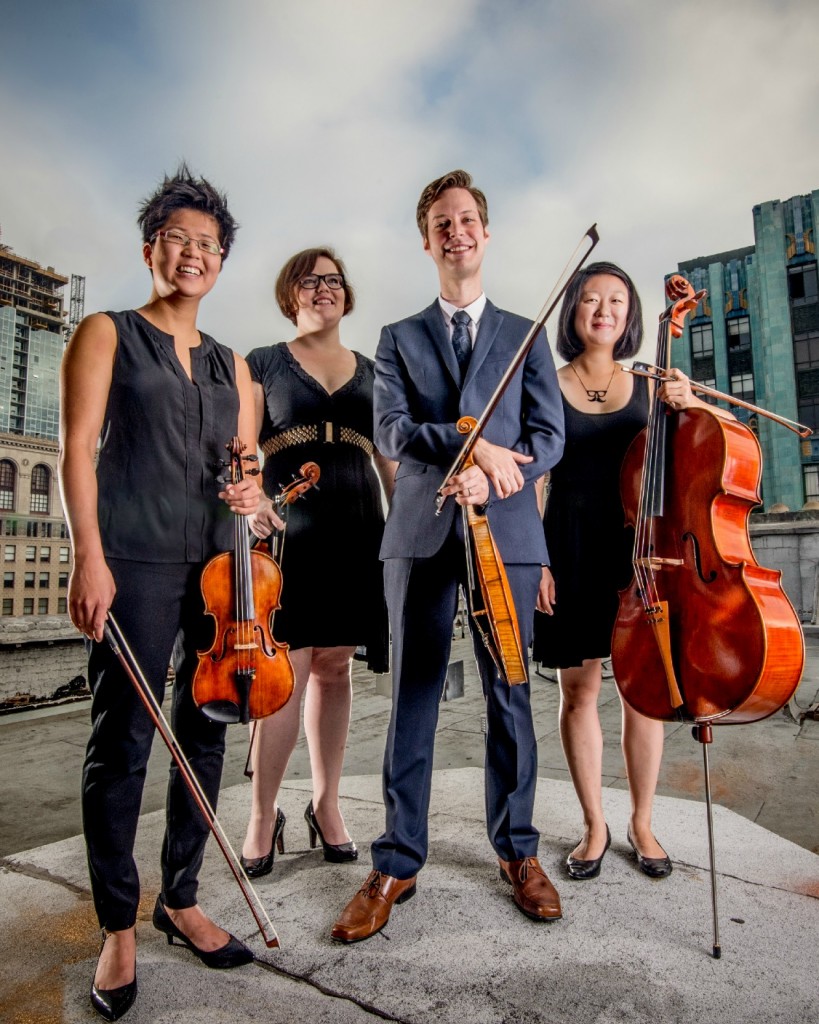Sibelius quartet offers the highlight in uneven Yale in New York concert
“Celebrating Nielsen and Sibelius” was the theme of Sunday evening’s concert in Weill Recital Hall, the first performance in this season’s “Yale in New York” series. These concerts showcase the students and faculty of the Yale School of Music, one of this country’s premier graduate institutions for classical performance and composition.
Sunday’s recital, focusing on the chamber music of Carl Nielsen and Jean Sibelius, two composers better known for the orchestral works, appealed at least to a sense of repertorial curiosity.
The most rewarding material came with the first half of the program, which got off to a rocky start nonetheless. In Nielsen’s Serenata in Vano (for the peculiar instrumentation of clarinet, bassoon, horn, cello, and double bass) the three wind players, all YSM faculty members, struggled in both their ensemble and individual parts. Even granting that the french horn is a difficult instrument to tame in chamber repertoire, William Purvis had an especially rough time, producing a few flubs and playing with generally questionable intonation. Cellist Ole Akahoshi and bassist Samuel Suggs fared much better, the former showing a particularly fine caramel tone.
The strongest item of the evening was Sibelius’s String Quartet in D minor (“Voces intimae”), performed by YSM’s quartet-in-residence, the Argus String Quartet. These four young players showed polished playing, good ensemble, and clear phrasing in the opening Andante, though somewhat meandering direction until the authoritative final chords.
All was set to right in the following Vivace, which had purpose from the very beginning, a thrilling feeling of perpetual motion relieved only by occasional pauses for breath. They conjured up summer heat in the casual, slow-resolving dissonances of the Adagio. The playing throughout this movement wove a spell, achieving a consistent dreamlike quality that grew intermittently more vivid.
Argus charmed in the Allegretto, though they took some time to match up to the indicated “pesante.” Some of the writing here, featuring full instrumentation, doubling, and at times even unison among all four instruments, seems to try to evoke the power of a string orchestra. Argus did not disappoint, playing with impressive power, and bringing an urgent, almost frantic energy to the closing Allegro.
The danger of a program like this one, exploring composers outside of their staple genres, is that there won’t be enough material to sustain a full evening; the second half of Sunday’s concert combined juvenilia and curiosities, the glut of which felt tedious compared to what came before.
Nielsen’s Fantasy for clarinet and piano was pleasant and uncomplicated, featuring a sort of Beethoven-Lite chordal declamation from pianist Yevgeny Yontov at the beginning, followed by a soothing clarinet line lovingly played by David Shifrin. Yontov displayed lovely, harp-like strumming in Sibelius’s Souvenir for violin and piano (Op. 79, No. 1), while violinist Adelya Nartadjieva would have done well to play a little less tastefully in her performance of his Valse (Op. 81, No. 3).
These three items were pleasant enough, but the closing piece, Nielsen’s Wind Quintet, did not offer much more to chew on. There were silvan sparkle and childlike humor in the first movement, followed by a flowing, carefree menuet.
The prelude to the last movement opened with a powerful blast of hot air, and included a lovely flute cadenza by Joanna Wu. A spacious theme follows, and the ensuing variations–eleven in total, not counting the conclusion–showed the range of the players’ versatility, from a sprightly scurry led by the flute, to playful noodling by the clarinet, to a colorful tableau composed of all five instruments.
None of these, however, has much time to develop, owing to the brevity of the theme, and in this performance at least there was little discernible progression through or even connection among the sequence of variations. The musicians had to take considerable pauses between some of the installments to facilitate page turns, only adding to the feeling that we were being offered not an integral piece of music but a series of light confections.






